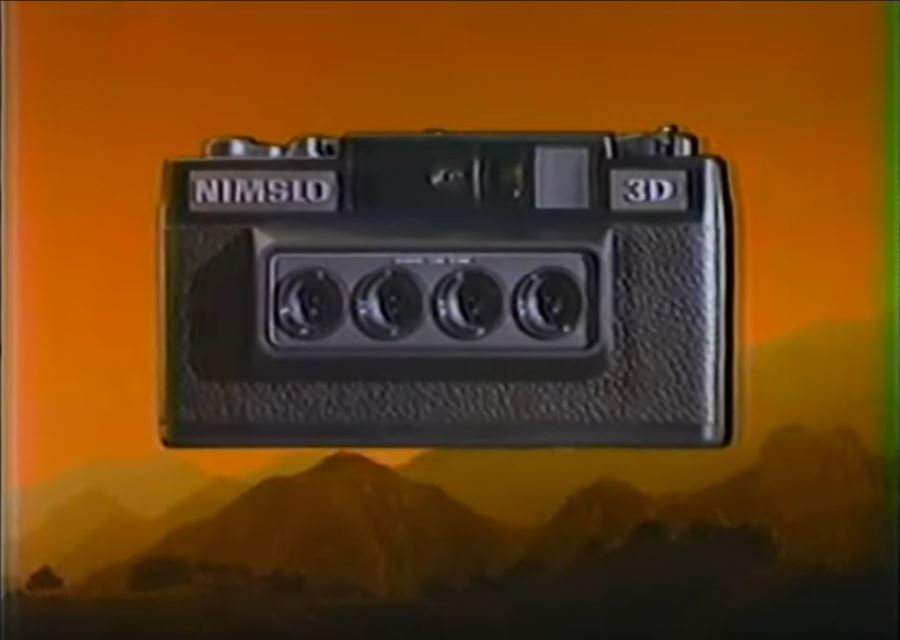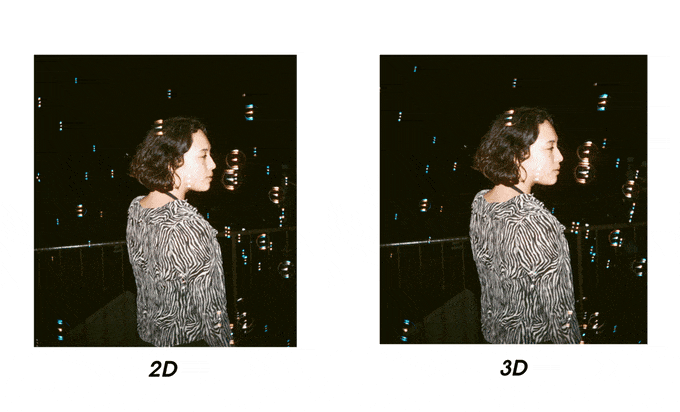
Check out our latest products
The evolution of photography has been quite exciting. From exposing photosensitive paper and glass to the creation of stereoscopic cameras to the invention of 35mm cameras, the photo world has seen some extraordinary creations. However, over the last few decades, we have seen so many exciting innovations from a Brownie to a disposable camera to the creation of digital, particularly smartphones and mirrorless. Now, anybody can pursue photography as a hobby, and the trillions of images in the digital void are an example of that. Which makes one wonder — what could be the next step in the evolution of the medium? The more we think about it, the more we realize that a 3D camera could be our calling.
The Creation of 3D Cameras
In the early 1980s, two inventors, Jerry Curtis Nims and Allen Kwok Wah Lo, created a quadrascopic stereo film camera called Nimslo 3D for Nimstec, the parent company. The camera produced lenticular prints, which gave 3D effects, without the viewer having to wear any special glasses for viewing. The camera achieved this feat by employing four lenses and capturing four half-frame images at once. So, the camera would use two 35mm frames to make four half-frame images. If you were using a 24-exposure roll, you would get 12 images only. Back then, the prints would be given by the company, but that could take weeks or months, which gradually led to the demise of the camera.

However, after the company went bankrupt, Nissei Corp, a company in Hong Kong, actually purchased the patents of Nimslo. As a result of their business venture and the continuation of Nimslo, they launched Nishika N8000. The camera was different, featuring four plastic lenses, a fixed mechanical shutter of 1/60, and three aperture settings (f/8, f/11, and f/19). However, due to financial issues and scams, the company, too, underwent losses.
Today, one can purchase these cameras on eBay or go for a new Kickstarter campaign camera, Reto 3D.
Why 3D Cameras Are The Next Evolution
With companies like Canon heavily investing in virtual reality (VR) lenses, and many technology companies like Apple and Meta are going after perfecting augmented reality (AR) images, it is the perfect time for 3D cameras to make a comeback. 2D images will continue to be mainstream, but 3D images are the next step for many photographers. 3D cameras capture not just the scene but also offer depth, which appears immensely realistic. As if one is seeing the moment frozen and on replay.
To give a better example, the 3D photos created by Josh Ethan Jones offer a new layer and meaning to the world of photography, especially at a time when AI images are often causing confusion. It is not to say that a 3D camera will solve the AI mishap, but rather offer a fresh perspective to photographers who want to add more realism to their work. A 3D camera will not be used by everyone, but can be an ideal solution for certain projects or certain creative endeavors for many.
In a time when our attention spans are decreasing and social media is the new norm, a 3D camera can help photographers reclaim image-making and even let viewers be an intrinsic part of the storytelling. Of course, this can only work if 3D technology is used by a few serious practitioners rather than content creators. The latter, most likely, will impact the novice in the technology.
Only time can tell whether we are proven right. But for now, the endless possibilities of 3D photography are immense.

![[2025 Upgraded] Retractable Car Charger, SUPERONE 69W Car Phone Charger with Cables Fast Charging, Gifts for Men Women Car Accessories for iPhone 16 15 14 13 12, Samsung, Black](https://i1.wp.com/m.media-amazon.com/images/I/61SaegZpsSL._AC_SL1500_.jpg?w=300&resize=300,300&ssl=1)



![[True Military-Grade] Car Phone Holder【2024 Stronger Suction & Clip】 Universal Cell Phone Holder for Car Mount for Dashboard Windshield Air Vent Long Arm Cell Phone Car Mount Thick Case,Black](https://i2.wp.com/m.media-amazon.com/images/I/715PBCuJezL._AC_SL1500_.jpg?w=300&resize=300,300&ssl=1)
![[エレコム] スマホショルダー ショルダーストラップ 肩掛け ストラップホールシート付属 丸紐 8mm P-STSDH2R08](https://i3.wp.com/m.media-amazon.com/images/I/51BMFf06pxL._AC_SL1500_.jpg?w=300&resize=300,300&ssl=1)







